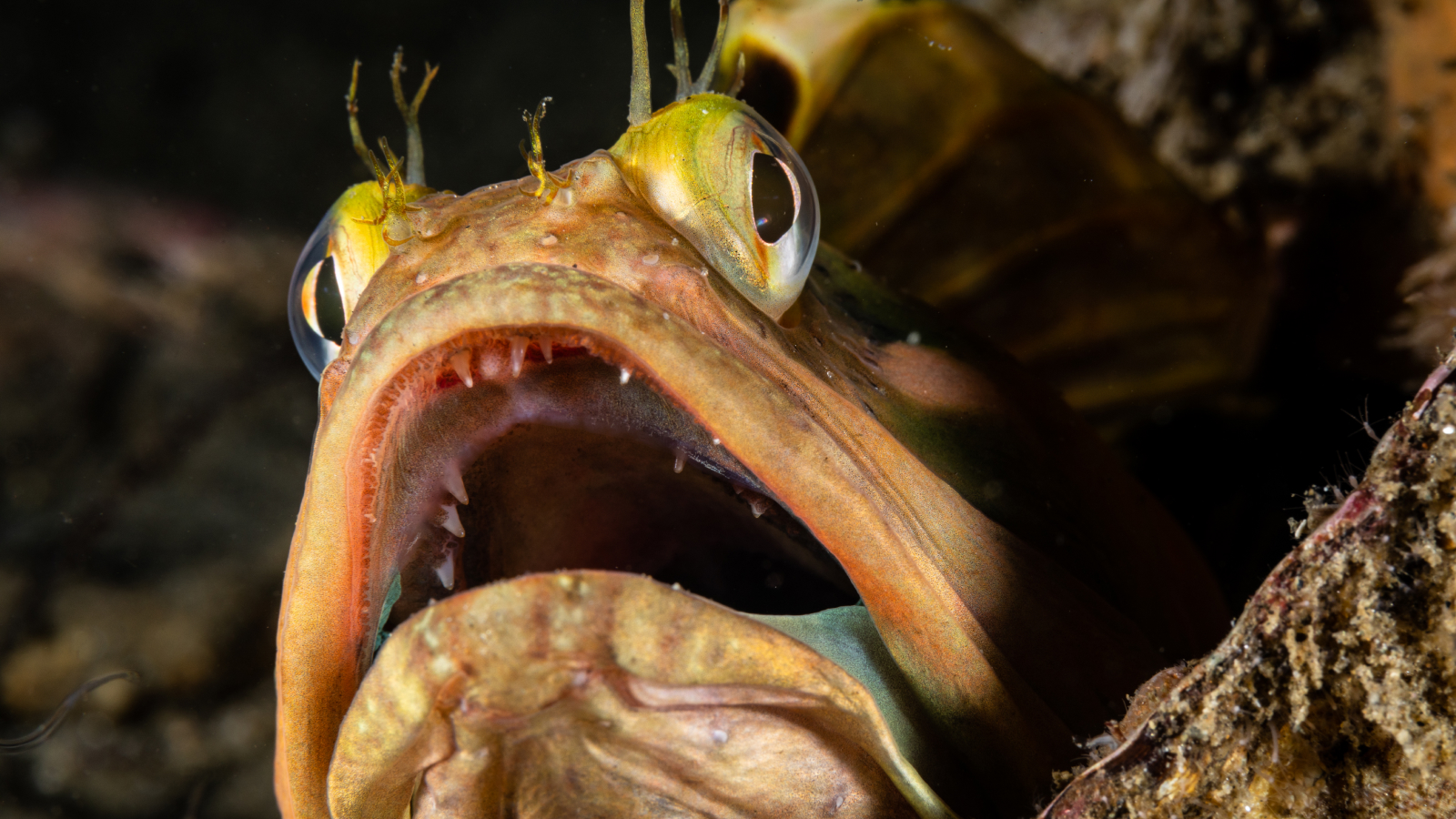Sarcastic fringehead: The angry little fish that engages in mouth-to-mouth combat
This curiously named sea-dweller lives along the Pacific coast, eats squid eggs and fights by opening its mouth wide.

Name: Sarcastic fringehead (Neoclinus blanchardi)
Where it lives: From San Francisco, to Baja California, Mexico
What it eats: Small prey such as fish, crustaceans, and squid eggs
Why it's awesome: Sarcastic fringeheads are best known for their silly name, extreme aggression and unconventional fighting style — essentially, angrily yawning at each other.
Usually found on rocky reefs or sandy seabeds between around 9 and 240 feet (3 to 73 meters) below the water's surface, these solitary fish make their home inside shells, clam burrows, rock crevices, "or even in empty cans and bottles if there is pollution," according to a 2014 AAAS article.
Despite being small — usually around 3 to 8 inches (7.5 to 20 centimeters) long, although they can grow to 12 inches (30 cm) — they can be extremely aggressive and attack almost anything that strays too close, including divers, according to the Aquarium of the Pacific in California.
Sarcastic fringeheads fight for dominance in a (literal) jaw-dropping display 😮 Don't miss #SuperNaturalSeries, from @JimCameron and narrated by Benedict Cumberbatch, now streaming on @DisneyPlus. pic.twitter.com/89BQi3PAarSeptember 23, 2022
If a female chooses a male to be her mate, she lays her eggs in his den for him to fertilize. He's then responsible for protecting the eggs until the young hatch.
Sign up for the Live Science daily newsletter now
Get the world’s most fascinating discoveries delivered straight to your inbox.
Related: Fish moms that carry young in their mouths sometimes eat their babies for breakfast
This makes these animals highly territorial, and there is intense competition between males for prime spots in which to set up their home: if they don't have a burrow, they won't be able to reproduce.
When fighting over territory, the fish try to intimidate their opponents by opening their jaws wide to display the bright colors inside. "The mouth's intimidating coloration, combined with the extreme nature of its size (which may be as much as four times its closed size) allows the larger male to establish dominance over the smaller," according to the conservation organization Oceana.
If the competitor isn't scared off by the giant, colorful mouth display, the pair will launch into mouth-to-mouth combat, pressing their wide mouths together. "While this may look like the fish are kissing, they are in fact aggressively defending their territory from each other," Inamura said. The bigger the fish's mouth, the more chance it has of winning this battle.
These over-the-top displays have earned the fish the "sarcastic" part of their name.

Melissa Hobson is a freelance writer who specializes in marine science, conservation and sustainability, and particularly loves writing about the bizarre behaviors of marine creatures. Melissa has worked for several marine conservation organizations where she soaked up their knowledge and passion for protecting the ocean. A certified Rescue Diver, she gets her scuba fix wherever possible but is too much of a wimp to dive in the UK these days so tends to stick to tropical waters. Her writing has also appeared in National Geographic, the Guardian, the Sunday Times, New Scientist, VICE and more.











